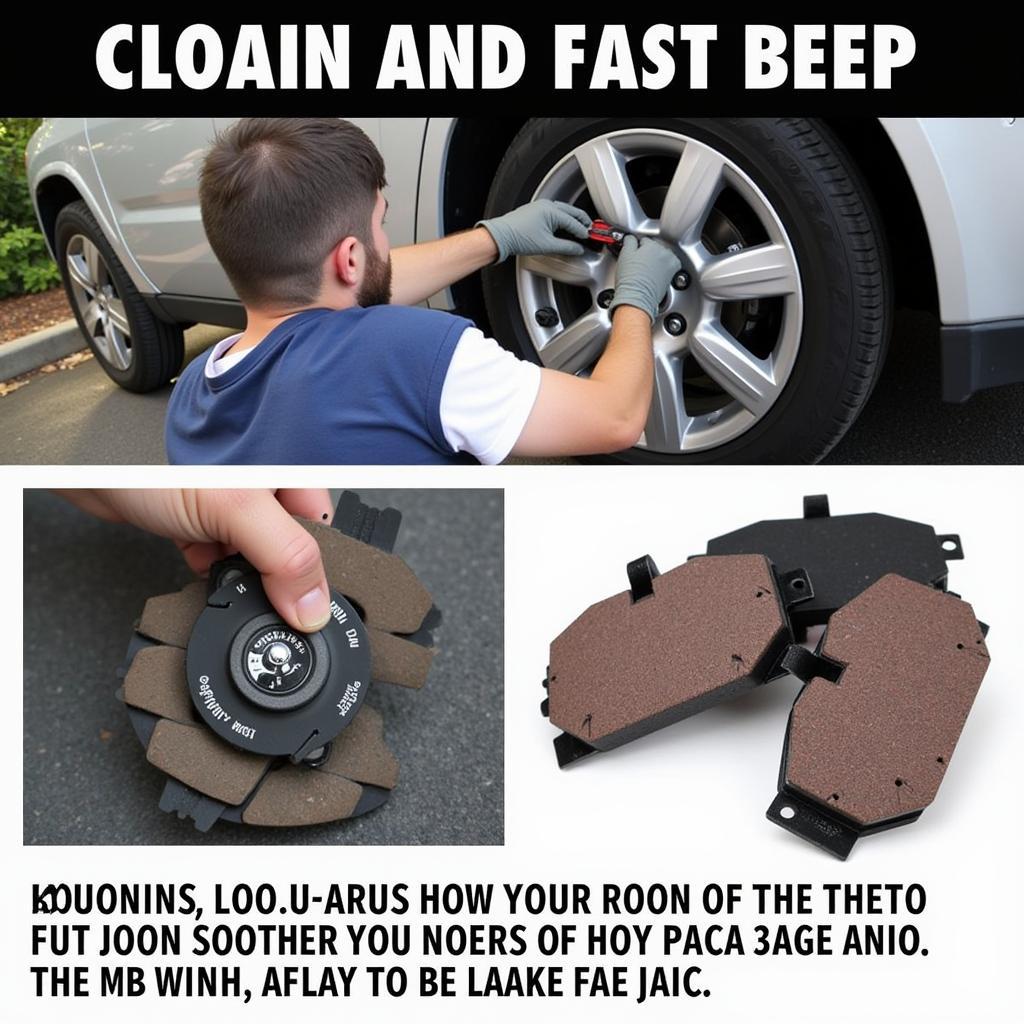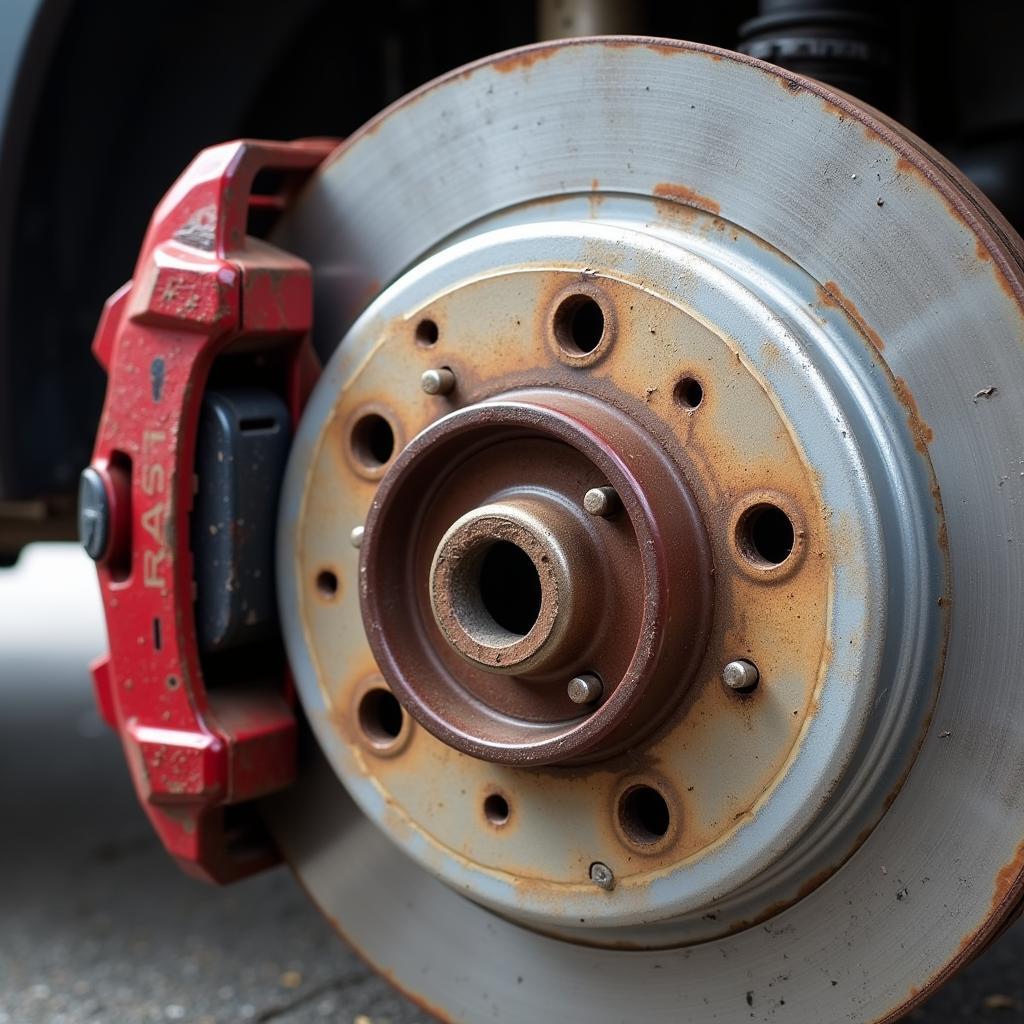Imagine this: you’re cruising down the road in your sleek BMW, enjoying the purr of the engine, when suddenly, a yellow warning light flashes on your dashboard – the dreaded “Check Brake Linings” message. Don’t panic! This is a common issue BMW owners face, and it doesn’t necessarily mean an expensive trip to the mechanic is in your immediate future. This comprehensive guide will walk you through the potential causes, troubleshooting steps, and possible solutions for this warning, empowering you to take control and ensure your BMW stays safe and road-ready.
Understanding Your BMW’s Braking System
Before we delve into the specifics of the warning, it’s essential to have a basic understanding of your BMW’s braking system. The “Check Brake Linings” warning specifically refers to your brake pads, the components that clamp down on the brake rotors to slow down or stop your car.
What Triggers the “BMW Check Brake Linings Warning”?
The most common culprit behind the “Check Brake Linings” warning is simple: worn brake pads. Like any part subjected to constant friction and heat, brake pads gradually wear down over time. Most BMWs come equipped with brake pad wear sensors that monitor the thickness of your brake pads. When the pads reach a critical wear point, the sensor triggers the warning light on your dashboard.
 Worn Brake Pads Compared to New Brake Pads
Worn Brake Pads Compared to New Brake Pads
However, there are instances where other factors might trigger the warning, such as:
- Faulty Brake Pad Wear Sensor: Sometimes, the sensor itself can malfunction, sending a false warning signal even if your brake pads are in good condition.
- Damaged Wiring: Wires connecting the sensor to the dashboard can become damaged or corroded, leading to an inaccurate reading.
- Extreme Driving Conditions: Frequent hard braking, driving in hilly areas, or towing heavy loads can accelerate brake pad wear and trigger the warning sooner.
What to Do When the “BMW Check Brake Linings” Warning Appears
1. Don’t Panic, But Don’t Ignore It Either: The warning light serves as an early notification. Continuing to drive with severely worn brake pads can compromise your braking performance and lead to more expensive repairs down the line.
2. Check Your Brake Pads: If you’re comfortable with basic car maintenance, you can visually inspect your brake pads. Look through the spaces between the wheel’s spokes for the brake caliper and pads. If the pad material is less than 1/4 inch thick, it’s likely time for a replacement.
 Checking Brake Pad Thickness Through Wheel Spokes
Checking Brake Pad Thickness Through Wheel Spokes
3. Seek Professional Inspection: If you’re unsure about your brake pad’s condition or suspect another issue, it’s crucial to schedule an inspection with a qualified mechanic specializing in BMWs.
The Importance of Professional Diagnosis and Repair
While visually inspecting your brake pads can give you a general idea of their condition, a professional inspection is essential for a comprehensive diagnosis. Experienced BMW technicians have the knowledge, tools, and expertise to:
- Accurately Measure Brake Pad Thickness: They use specialized tools to obtain precise measurements, ensuring accurate assessment of wear and tear.
- Inspect the Entire Braking System: They go beyond just the pads, checking the rotors, calipers, brake fluid, and sensors for any signs of damage or wear.
- Identify Underlying Issues: They can pinpoint and address underlying problems like faulty sensors or damaged wiring that might be triggering the warning light.
- Perform Necessary Repairs or Replacements: Using high-quality parts and following manufacturer specifications, they ensure your BMW’s braking system is restored to optimal functionality and safety standards.
BMW Check Brake Linings Warning: Your Questions Answered
Q: Can I continue driving with the “Check Brake Linings” warning on?
A: While you might not experience immediate braking issues, it’s strongly advised not to ignore the warning. Driving with significantly worn brake pads reduces braking efficiency and can lead to rotor damage, jeopardizing your safety and resulting in costlier repairs.
Q: How often should I replace my BMW’s brake pads?
A: Brake pad lifespan varies greatly depending on driving style, conditions, and vehicle model. However, it’s generally recommended to have them inspected every 10,000-12,000 miles and replaced as needed.
Q: Can I replace my BMW’s brake pads myself?
A: While possible, it’s recommended to have brake pad replacements performed by qualified professionals. They have the experience and tools to ensure proper installation and safe braking performance.
Q: Is the “Check Brake Linings” warning covered under my BMW warranty?
A: Brake pad replacements are typically considered regular maintenance items and might not be covered under the standard warranty. However, if the warning is due to a faulty sensor or other manufacturing defects, it could be covered. Consulting your warranty documentation or contacting your BMW dealer can provide clarity.
Addressing the “BMW Check Brake Linings” Warning: A Proactive Approach
The “BMW Check Brake Linings” warning is your car’s way of communicating a potential issue. By understanding the warning, promptly addressing it, and seeking professional assistance when needed, you can ensure your BMW continues to deliver the exhilarating performance and unwavering safety it’s renowned for. Remember, prioritizing regular maintenance and timely repairs are key to enjoying countless miles of worry-free driving pleasure in your BMW.


